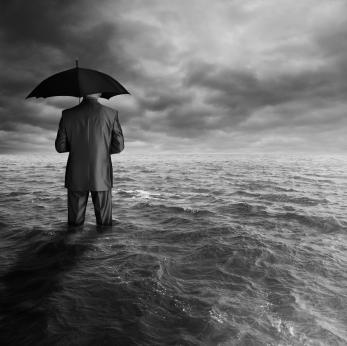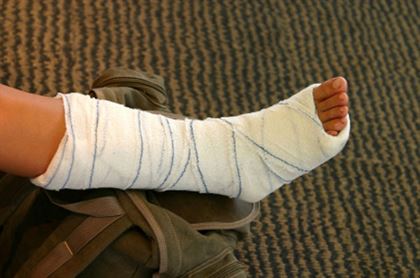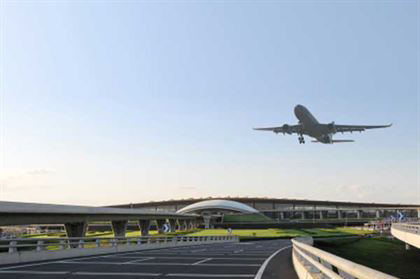 The increasing severity of storms, floods and droughts the U.S. not only keeps forecasters busy, it also has an impact on American wallets.
The increasing severity of storms, floods and droughts the U.S. not only keeps forecasters busy, it also has an impact on American wallets.
A new study by Munich Re shows that North America has been most affected by weather-related extreme events in recent decades.
The publication “Severe weather in North America” analyzes all kinds of weather perils and their trends. It reports and shows that the continent has experienced the largest increases in weather-related loss events.
“This publication represents another contribution to the global dialogue concerning weather-related activities and their causes. What is clearly evident when the longterm data is reviewed is that losses from weather events are trending upward,” Tony Kuczinski, CEO of Munich Reinsurance America, said in a statement. “To simply say that this trend is a statistical anomaly or part of a long-term cycle of activity misses the point of these efforts – we must set aside our biases and continue a meaningful dialogue in search of answers to mitigate the losses that we are experiencing.”
For the period concerned, 1980 to 2011, the overall loss burden from weather catastrophes was $1,060 billion (in 2011 values). The insured losses amounted to $510 billion, and some 30,000 people lost their lives due to weather catastrophes in North America during this timeframe.
With $62.2 billion insured losses and overall losses of $125 billion (in original values) Hurricane Katrina in 2005 was the costliest event ever recorded in the U.S. Katrina was also the deadliest single storm event, claiming 1,322 lives.
The study was prepared in order to support underwriters and clients in North America, the world’s largest insurance and reinsurance market.
The North American continent is exposed to every type of hazardous weather peril – tropical cyclone, thunderstorm, winter storm, tornado, wildfire, drought and flood. One reason for this is there is no mountain range running east to west that separates hot from cold air.
Nowhere in the world is the rising number of natural catastrophes more evident than in North America. The study shows a nearly quintupled number of weather-related loss events in North America for the past three decades, compared with an increase factor of 4 in Asia, 2.5 in Africa, 2 in Europe and 1.5 in South America, according to the study.
Anthropogenic climate change is believed to contribute to this trend, though it influences various perils in different ways. Climate change particularly affects formation of heat waves, droughts, intense precipitation events and in the long run most probably also tropical cyclone intensity,
Among many other risk insights the study now provides new evidence for the emerging impact of climate change. For thunderstorm-related losses the analysis reveals increasing volatility and a significant long-term upward trend in the normalized figures over the last 40 years. These figures have been adjusted to account for factors such as increasing
Dr. Peter Höppe, head of Munich Re’s Geo Risks Research unit, said increases in population and built-up areas and increasing values, particularly in hazard-prone regions, need to be on Munich Re’s risk radar, even without changing hazard conditions,
Storms
Storms dominate the weather loss statistics; they account for 76 percent of overall losses ($805 billion since 1980) and – due to high insurance penetration – for 89 percent of insured losses ($454 billion). 2005 was the major hurricane year when Katrina, Rita and Wilma occurred and 2011 the record year for thunderstorm related losses, when the U.S. suffered $26 billion in insured property losses from that kind of events alone.
Tropical cyclones
Tropical cyclones can affect almost the entire North American East and Gulf Coasts – especially if they develop into hurricanes. A main loss driver is the concentration of people and assets on the coast combined with high and possibly growing vulnerabilities.
In recent years, not only high winds but storm surge risk has moved into focus, given that it carries an immense loss potential and is responsible for fatalities in high numbers. August 24, 2012 marked the 20th anniversary of Hurricane Andrew, the 20th century’s most expensive hurricane, resulting in original losses of $17 billion for the insurance industry. It was considered a wake-up-call.
Following Andrew, U.S. building codes were tightened and the insurance industry introduced complex risk models, while calling for stronger prevention measures. Therefore if an Andrew-type event occurred today affecting the same region, the normalized losses would probably be lower.
Thunderstorms
The study draws special attention to thunderstorms: besides tropical cyclones, thunderstorms are the most important severe weather hazard for the insurance industry in the U.S. Between 1980 and 2011, 43 percent of insured property windstorm losses ($180 billion) were caused by severe thunderstorms. Thunderstorm-related losses have increased over the past 40 years. The study identifies two major drivers of this trend. One factor is urban sprawl exposing higher destructible values to the forces of thunderstorms. Parallel to this, the study provides strong indication that changing climatic conditions are having a visible impact.
Floods
Several hundred loss events resulting from floods add up to a billion-dollar figure every year. While exposure to flooding is increasing, flood control and protection measures that counteract this are being improved. Even if they are expensive, measures for flood protection do pay off. Without flood management and control structures, the cost of the 2011 flood on the Mississippi, around $5 billion, would have amounted to more than $100 billion.
Heat-waves and droughts
Other events like heat-waves, droughts and wildfires contributed 15 percent ($160 billion) to the overall losses from severe weather events, with droughts accounting for more than half of this.
Climate change will alter the occurrence of extremely dry and hot weather conditions. The loss potential of droughts and heat-waves is often underestimated, as their impact is only felt gradually but affects every sector from private households, infrastructure and power supply to agriculture over a huge area.
On top of this, long dry periods create ideal conditions for promoting the outbreak and spread of wildfires. New high-temperature records have been set in recent years. To date (including September) 2012 has been the warmest year in the US since the beginning of weather records in 1895, with a mean temperature 3.8°F (2.1°C) above the 20th century average. Nearly two thirds of the area under cultivation was affected by the drought in 2012, which was among the most extreme events of the last 50 to 100 years. Crop insurance will play an even more significant role as climate change evolves.












